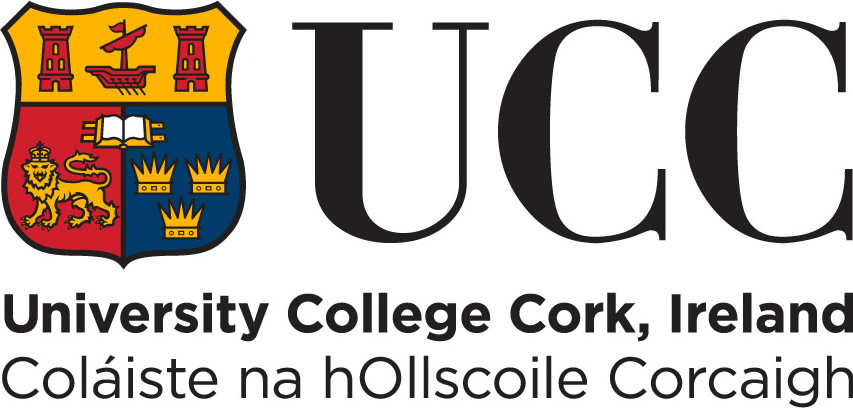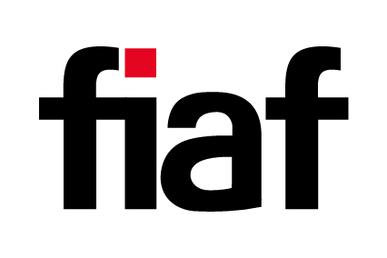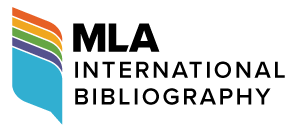European Cinema and Continental Philosophy: Film as Thought Experiment,
by Thomas Elsaesser. Bloomsbury Publishing, 2019, 341 pp.
Ekin Erkan
Thomas Elsaesser’s recent scholarship has examined the “mind-game film”, a phenomenon in Hollywood that is broadly characterised by multi-platform storytelling, paratextual narrative feedback loops (“Cinema” 8), nonlinear storytelling, and unreliable character perspectives (Littschwager 21). While “mind-game” or “puzzle” films have become a contentious subject amongst post-cinema scholars concerned with Hollywood storytelling, what is to be said of contemporary European independent cinema? Elsaesser’s timely publication, European Cinema and Continental Philosophy, examines an amalgam of politically inclined European auteurs to resolve this query. Elsaesser concedes that there exists a phenomenological confluence between the mind-game film and contemporary European cinema. For instance, both produce characters afflicted by productive pathologies, designating new socially useful forms of agency and identity. One only needs to consult the amnesiac protagonist M (Markku Peltola) in Aki Kaurismäki’s The Man Without a Past (Mies vailla menneisyyttä, 2002) or, as regards Lars von Trier’s cinema, Beth (Emily Watson) in Breaking the Waves (1996), Selma (Björk) in Dancer in the Dark (2000), “She” (Charlotte Gainsbourg) in Antichrist (2009) or Joe (Charlotte Gainsbourg) in Nymphomaniac (2013) to evince this overlap. However, this book is more concerned with performative self-contradictions, whereby cinema-as-enunciator is put under erasure, thus aggravating the inherent discrepancies troubling Europe today. Elsaesser, indeed, evaluates a growing general disaffection with politics, the rise of populist nationalism and far-right fringe parties, as well as an increasing population of economic migrants, refugees, and asylum seekers.
Using filmic case studies from contemporary auteurs including Claire Denis, Fatih Akin, Aki Kaurismäki, Michael Haneke, and Lars von Trier, Elsaesser engages in a survey of film-philosophy via twentieth-century continental theory. Interested in films that index the growth of neoliberalism in Europe since the 1990s, he uses the label “cinema of abjection” to address these crises. Elsaesser’s “cinema of abjection” draws from Julia Kristeva’s Powers of Horror, where the abject object enacts ethical demands or political interpellation through its very presence. For Kristeva, abjection describes a kind of confrontational subjective horror, violating its own borders, either physically (sweat, vomit, faeces) or psychologically (the ego externalises the source of its suffering). The abject object exists in terms of ambiguity and uncertainty, traversing the threshold of inside/outside, as the space between desire and danger. Although Elsaesser is concerned with abject spectatorship rather than structural or aesthetic abjection, he similarly directs his attention towards the margins of socially constructed categories, where meaning is questioned and challenged. Thus, the contemporary European subject is increasingly abject, as they are first and foremost regarded as consumers under finance capitalism rather than through political agency.
Elsaesser traces the reactionary nationalism and active dissent, referencing Brexit and various impasses between 2008 to 2014 (e.g. Greece and the crisis of the Euro; Syria and the so-called “refugee crisis”). He notes that political philosophical discourses, in parallel to cinema, are now mutually “akin to thought experiments”, insofar as they are “not primarily concerned with practical solutions” but, instead, with identifying “inherent paradoxes” and “constitutive dilemmas” (European 94). Elsaesser postulates that “as Europe is becoming more like the United States a hundred years ago” (1), European cinema can no longer aesthetically rely on thinking of the screen as a “window-on-the-world”, or epistemologically pose a “mirror-to-the-self” (5). Instead, what was once extolled as the “good object”, connoting art, originality, and cultural value against the foil of Hollywood’s commerce, formula, and box office, is now not only untenable, but saddled with a newfound ethical task anchored in the contemporary abject European subject (165).
Elsaesser characterises the communal political dilemmas facing contemporary Europe as tripartite. The interjection of centralised bureaucracy, seeping into everyday life, indexes the “democracy deficit”, or the widespread, deep disaffection with opaque government practices. Europe’s “multicultural diversity deficit” discloses how multinational communities have “not yet found a modus of how to live together” (85). The “social justice deficit” denotes an ever-increasing socioeconomic gap between wealth and job opportunities, environmental protection and welfare provisions, or health insurance and free education (84). Elsaesser’s proposal is bolstered by three premises. First, “that contemporary (European) philosophy has something to say about cinema”. Second, “that the demotion of European art and auteur cinema is an opportunity for such cinema [...] to attain a paradoxical kind of autonomy”. Lastly, “this requires a notion of cinema as having the status and function of a ‘thought experiment’” (23–4). By testing the core values of democracy in experimental political scenarios, Elsaesser tasks contemporary European cinema with “combining real-world reference with ‘as if’ scenarios, often in order to explore and expose intractable ethical dilemmas” (85). Elsaesser significantly broadens the ethical imperative of “film as thought experiment” first articulated within the Hollywood mind-game film terrain whereby films, understood as “simulations of test situations” were opposed to pure “representations” (Cinema 4).
Beginning with the book’s introductory chapter, “European Cinema in the Twenty-First Century”, Elsaesser not only brackets the “apparatus theories” and dogmatic appropriation of “The Mirror Stage as Formative of the I Function” that marked the Lacanian engagement of 1970s film studies, but also seeks alternative models from what Nico Baumbach has aptly termed the “pedagogical” Deleuzian film-philosophy tradition (126). Pursuing an alternative approach, whereby an ethnically hyphenated and cross-cleavaged European cinema “finds itself either as an entity without identity or with too many identities”, Elsaesser charges filmic artefacts, auteurs, and the concomitant phantasm of ethical philosophy with “double-occupancy” (8). “Double occupancy”, as an alternative to identity politics, is Elsaesser’s political doctrine of “mutual interference”, or a destabilising arrest of the epithet “European” via intersecting national trajectories. Here, Elsaesserseeks to illuminate the double occupancy of both the European subject’s self-image and European cinema, where “identities are multiply defined, multiply experienced, and can be multiply assigned” along religious, linguistic, or national cleavages by turning to a “cinema of abjection” (109–10).
As opposed to the self-aware mind-game film, where the screen is a kind of two-way mirror, Elsaesser’s cinema of abjection deploys the screen “as a surface that is neither transparent nor reflecting back”, both resisting sympathy and blocking empathy (European 173). Elsaesser illustrates the paradox of the (contemporary European) self, who “outsources itself to the Other, who is unknowable, and whose unpredictability […] ‘grounds’” the ethical relationship in a kind of asymmetrical exchange that is “clearly not reciprocal, but skewed into a shared and precarious imbalance” (118). Having characterised Europe’s variegated “crises”, Elsaesser devotes the book’s preliminary chapters to scrutinising the intertextual genealogy between film and post-Deleuzian materialist philosophies of immanence, turning to Alain Badiou, Jacques Rancière, Jean-Luc Nancy and Giorgio Agamben, before producing filmic case studies.
Instead of consulting Badiou’s seminal 2013 book Cinema, Elsaesser employs his Deleuze: The Clamour of Being, where Badiou engages with Deleuze’s figure of the “purified automaton” to describe the exteriority of both cinema and thought. Elsaesser is not concerned with cinema’s inherent “impurity”, confessional stasis, or interpretative function but, instead, with the ethical convergence between contingency and indifference that, for Badiou, cinema occupies as an “empty place” (38). Insofar as Elsaesser is concerned, this means that cinema can act as “both vehicle and instance” (51) as it paradoxically restores belief in the world.
If it is through Badiou, the unrepentant Maoist militant, that Elsaesser’s gleaming idealism is founded, it is via Rancière that Elsaesser concedes to a kind of restrained post-Marxist anarchist qualification. Of Rancière’s three great books on cinema, it is Film Fables that Elsaesser cites. For Rancière, cinema is technological and strategic; at the forefront of his politics, cinema possesses the democratising force of objectivity. This is, of course, a double-edged sword—as Elsaesser states, this allots cinema with an objective “indifference to hierarchies or taxonomies, making no fundamental distinction between the beautiful and the ugly, the valuable and the insignificant” (51). For Ranciére, cinema erases the postmodern tension between technological means and aesthetic possibility. The result is that, as it erases this tension that makes art possible, cinema lapses from the “aesthetic regime of art” into the “outmoded representative regime of art” (Baumbach 126). Thus, Ranciére’s film-philosophy more definitely breaks with Deleuze than Badiou’s—by troubling the historic/epistemological break between the movement-image and time-image, cinema poses an anarchic “thwarting logic”, allowing Elsaesser to facilitate new relationships between the symbolic and the imaginary.
No political philosophy is complete without a mention of Rancière’s dissensus in his radical break from Althusser. This conception of “political” is indispensable for Elsaesser. The “political” (le politique) occupies the evacuation of “politics” (la politique) which, for Ranciére, is the terrain of “policy” or “the police” (28). Elsaesser reminds us of Claude Lefort’s distinction in The Political Forms of Modern Society, where “the political” makes us mindful of the gap between the “empty place of power” and that which fills it with authority, which Žižek terms the “absent centre of political ideology” (95). Elsaesser, maintaining this distinction, ushers an inversion and imbalance of power relations crucial to both his concept of “film as thought experiment”, and for European cinema as a cinema of abjection.
After tracing this collective closure between ethics, philosophy, and film, Elsaesser demonstrates the levelled plane between ethics and politics, aligned as thought experiment. This “new ethical cinema” is conceived neither from the “documentary realism” that characterised the nouvelle vague’s cinéma verité, nor reliant on the didactic parable of Deleuzian pedagogy. Elsaesser’s project distils these thought experiments to “test the values of the Enlightenment and to imagine [...] a ‘cinema of abjection’, conceived of as a critical vantage point” (163). As such, Elsaesser’s cinema of abjection examines how individuals may live and interact as a community under the preliminary conditions of inherent antagonism.
As Kristeva’s abjection is riven between “substantive” and “structural” usage, we are reminded of Barbara Creed’s distinction in The Monstrous Feminine—the “substantive” abject concerns the bodily, or corporeal, vicissitudes that stain the films of Eli Roth, David Cronenberg or Abel Ferrara, which patrol the borders between violence, horror, and pornography. Elsaesser, concerned with the “structural abject”, transgresses abject protagonists and the spaces tethered to Laura Mulvey’s voyeurism and “visceral-substantive” spectatorship of queer cinema theory (e.g. Dawn Epsosito and Carol Clover). Instead, Elsaesser goes one step further than Creed, freeing structural abjection from its symbolic maternal bondage, allowing abject spectatorship a privileged fulcrum, “at once inside and outside” (163).
Elsaesser’s primary ethical preoccupation is with transgressing empathy as an ethically feasible gesture of solidarity. Elsaesser prompts “abjection as withdrawal” (154), mobilising Nancy’s “inoperative community” where what we share are the “spaces that separate us” (159). Turning to the canon of the Dardenne brothers, Elsaesser highlights the cinematic techniques of “proximity in separateness”, where we are excluded even as the camera insists on us being included (156). Elsaesser reminds the reader of Ken Loach’s I, Daniel Blake (2016), where “abjecthood as a weapon” transpires via withdrawal, rather than the traditional terms of protest and articulated demands. Thus, the “structural abject” emerges in the gaps.
It is not that Elsaesser tasks European auteurs with solving the problems birthed by globalisation, corporate multinational capitalism, and the weakening of the social contract. Rather, he proposes that European cinema is able to frame and articulate abject spectatorship via the “uncanny effects of the excluded” (14). Elsaesser’s analysis of Claire Denis’s Beau travail (1999), for instance, weds Agnès Godard’s disorienting temporal and optical points of view with the protagonist Galoup, the Legionnaires commander who is similarly unlocalised and unlocatable. Denis’s stylised mise en scène reflects Nancy’s polarisation between “everydayness and historicity”, or being-together and exteriority (Mitsein) (41). Similarly, Elsaesser turns to Christian Petzold’s Barbara (2012) and the film’s layered motif of Rembrandt’s The Anatomy Lesson. As André (Ronald Zehrfeld), the physician working beside Barbara (Nina Hoss), notes, there is a blatant “mistake” in the painting—we are faced with an anatomical anomaly (the left hand is positioned as the right). Elsaesser devolves how the painting not only existentially indexes abjecthood in the German Democratic Republic, but also directs the “distrust of disenchantment with the Enlightenment”, intuiting a post-ideological verdict (170).
By turning to Fatih Akin’s The Edge of Heaven (Auf der anderen Seite, 2007), Elsaesser further grounds such post-ideological politics. Akin’s film quotes Rainer Werner Fassbinder’s Bundesrepublik Deutschland (BRD) trilogy, which consists of The Marriage of Maria Braun (Die Ehe der Maria Braun, 1979), Veronika Voss (Die Sehnsucht der Veronika Voss, 1982), and Lola (1981). The BRD trilogy is marked by interwoven characters who operate under the common thread of an unacknowledged traumatic past veiled by historical amnesia. In The Edge of Heaven, corresponding diasporic Turkish-German denizens mobilise parallel narratives and are caught in coincidences or dramatic ironies that inculcate a “controlled set of circumstances” and actions, further evincing the thesis of film as thought experiment (217). Elsaesser’s analyses are both hermeneutic and paratextual, demonstrating the double occupancy in the films of auteurs such as Krzysztof Kieslowski, Michael Haneke and Abbas Kiarostami, who “make films outside their home country, while still ‘representing’ it, by associating its national stereotypes” (281).
Elsaesser’s book is equally invigorated with analyses of the European festival circuit—double occupancy also transpires when global auteurs are constitutively “serving at least two masters”, including a local and global audience (281, emphasis in original). For instance, Elsaesser turns to Matteo Garrone and Paolo Sorrentino, directors simultaneously preoccupied with satisfying a “domestic critical establishment”, while hoping to “seduce an international audience” that “expects exoticism either in the form of gritty realism or picturesque squalor” (281). As indicated in the multiuse of “abjecthood” and “double occupancy”, Elsaesser’s theoretical dexterity is in the applied multivalence of his philosophical arsenal.
Elsaesser’s book is both accessible and rigorous, brimming with indispensable insights for students, scholars, and readers of film studies, continental philosophy, visual culture, and media theory. In European Cinema: Face to Face with Hollywood Elsaesser argues that European cinema was a symbolic construction; now this symbolic efficacy is transfigured, as it becomes the case for regarding European film as thought experiment. Putting forward a change of model relative to Europe's self-understanding as to its “future role in globalization” (211), Elsaesser brilliantly analyses how it is that European cinema occupies a newly abject position vis-à-vis Hollywood and Asian/world cinemas. It is a rare pleasure to read a work of film-philosophy that so carefully balances textual hermeneutics and political deconstructions.
References
1. Akin, Fatih, director. The Edge of Heaven [Auf der anderen Seite]. Anka Film, 2007.
2. Badiou, Alain. Deleuze: The Clamor of Being. Translated by Louise Burchill, U of Minnesota P, 1999.
3. ---. Cinema. Translated by Susan Spitzer, Polity P, 2013.
4. Baumbach, Nico. Cinema/Politics/Philosophy. Columbia UP, 2019, DOI: https://doi.org/10.7312/baum18422.
5. Creed, Barbara. The Monstrous-Feminine: Film, Feminism, Psychoanalysis. Routledge, 1993.
6. Clover, Carol. Men Women and Chainsaws: Gender in the Modern Horror Film. Princeton U P, 1992.
7. Deleuze, Gilles. Cinema 1: The Movement-Image. Translated by Hugh Tomlinson and Barbara Habberjam, U of Minnesota P, 1986.
8. ---. Cinema 2: The Time-Image. Translated by Hugh Tomlinson and Robert Galeta, U of Minnesota P, 1989.
9. Denis, Claire, director. Beau travail. La Sept-Arte, 2012.
10. Elsaesser, Thomas. “Cinema and Game Spaces: Contingency as Our New Casuality.” New Review of Film and Television Studies, vol. 17, no. 1, 2017, pp. 1–39, DOI: https://doi.org/10.1080/17400309.2017.1411870.
11. ---. European Cinema and Continental Philosophy: Film as Thought Experiment. Bloomsbury Academic, 2019.
12. ---. European Cinema: Face to Face with Hollywood. Amsterdam UP, 2004, DOI: https://doi.org/10.1515/9789048505173.
13. Esposito, Dawn. “Gloria, Maerose, Irene, and Me: Mafia Women and Abject Spectatorship.” Melus, vol. 28, no. 3, 2003, pp. 91–109, DOI: https://doi.org/10.2307/3595262.
14. Kaurismäki,Aki, director. The Man Without a Past [Mies vailla menneisyyttä]. Sputnik, 2002.
15. Kristeva, Julia. Powers of Horror: An Essay on Abjection. Translated by Leon S. Roudiez, Columbia UP, 1982.
16. Lacan, Jacques. “The Mirror Stage as Formative of the I Function.” Écrits: The First Complete Edition in English. Translated by Bruce Fink, W. W. Norton & Co, 2006.
17. Lefort, Claude. The Political Forms of Modern Society: Bureaucracy, Democracy, Totalitarianism.MIT P, 1986.
18. Littschwager, Simin Nina. Making Sense of Mind-Game Films: Narrative Complexity, Embodiment, and the Senses. Bloomsbury Academic, 2019, DOI: https://doi.org/10.5040/9781501337079.
19. Loach, Ken, director. I, Daniel Blake.Sixteen Films, 2016.
20. Mulvey, Laura. Fetishism and Curiosity. Indiana UP, 1996.
21. Nancy, Jean-Luc. The Inoperative Community. Translated by Peter Connor, Lisa Garbus, Michael Holland, and Simona Sawhney, U of Minnesota P, 1986.
22. Petzold, Christian, director. Barbara. Schramm Film Koerner & Weber, 2012.
23. Rancière, Jacques. Disagreement: Politics and Philosophy. Translated by Julie Rose, U of Minnesota P, 1998.
24. ---. Film Fables. Translated by Emiliano Battista, Bloomsbury Academic, 2005.
25. Rembrandt, The Anatomy Lesson of Dr. Deijman. 1656, Amsterdam Museum.
26. Von Trier, Lars, director. Antichrist. Zentropa, 2009.
27. ---. Breaking the Waves. Argus Film Produktie, 1996.
28. ---. Dancer in the Dark, Zentropa, 2000.
29. ---. Nymphomaniac. Zentropa, 2013.
30. Žižek, Slavoj. The Ticklish Subject: The Empty Centre of Political Ontology. Verso, 1999.
Suggested Citation
Erkan, Ekin. “European Cinema and Continental Philosophy: Film as Thought Experiment, by Thomas Elsaesser.” Book Review. Alphaville: Journal of Film and Screen Media, no. 18, 2019, pp. 232–238. https://doi.org/10.33178/alpha.18.22.
Ekin Erkan is a film studies and new media scholar and monthly columnist at the art criticism journal AEQAI, researching within the confluence of post-cinema, continental philosophy, hacktivism and new media theory. Erkan’s current research surveys the theoretical terrain of digitality, drawing from documentary corollaries, Alexander Galloway’s work on “deep” and “flat” digitality, Lareullean non-standard philosophy, post-Deleuzian materialist film philosophies of immanence, and Bernard Stiegler’s literature on technics and the “neganthropocene.”









